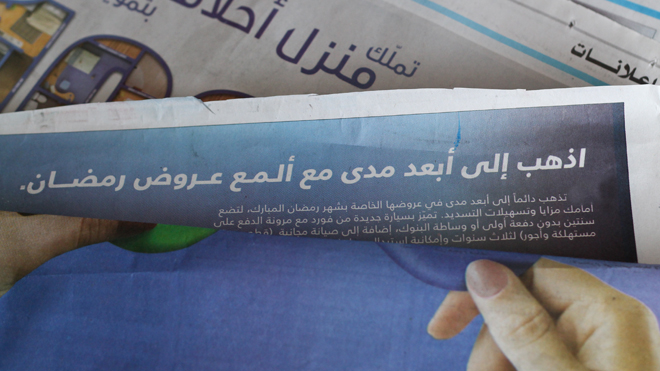By Wisam Suheimat*
Arabic is a rich and sophisticated language that can evoke vivid imagery and powerful emotions in the reader, but Arabized ads and collateral material like brochures that were originally conceived and created in a different language, typically English for multinational clients, tend to struggle at replicating the same impact, meaning and personality. There are culturally irrelevant reference points, topics, styles and all manner of reasons why pure Arabization is simply a bad practice, but there is an inherent challenge in the Arabic language, particularly when it comes to written copy.
Copywriting for ads in English is often described as “salesmanship in print” where the copy, or at least the good ones are written to sound, in the readers mind, like a person talking to you in real life. Beside persuasiveness and using words and reference points that resonate with the reader, the copy crafts the voice and tone of a brand to give it a human quality.
the biggest challenge is writing copy in Arabic that is going to sound as convincing as someone talking to you colloquially
In the case of Arabic there are unique challenges with the duality of the language; a written (Modern Standard Arabic) and a spoken language. Though headlines and snappy slogans have more creative license, the body copy and any sentence or paragraph must adhere to Modern Standard Arabic, which is never spoken except in newscasts, official speeches and in courts. And here lies the biggest challenge of writing copy in Arabic that is going to sound as convincing as someone talking to you colloquially and embodying a personality and tone that brings a brand to life.
Humour illustrates the problem quite nicely as most if not all spoken jokes are said in colloquial and any attempts to write them down in Standard Arabic will inevitably result in something being “lost in translation”. This creates additional stress on the Arabic copywriter as humour is one of the more effective advertising strategies.
Though Arabic copywriters do have unique opportunities in using Classical Arabic and beautiful poetry in ads as reference points that other languages would struggle to effectively use (think Chaucer for English), it doesn’t help in creating the brand personality through “Arabization” because if you knew someone who went around ONLY speaking in Classical Arabic you’d think they were a bit odd.
Hebrew had a similar duality over a century ago where an ancient written Hebrew co-existed with a spoken Hebrew with wide variations all over the world that was influenced by many other languages, like in the case of Yiddish in Germany. But the Zionists knew that to form a future state where different Jews could live, work and prosper they would need to modernize and unify the language and so over the course of two to three generations created modern Hebrew; a written and spoken language. There have been many attempts to formalize a colloquial written Arabic with limited success as well as outright hostility to the idea. The most obvious problem is regional dialects and vernacular making it impossible to agree on a standard spoken Arabic. The other obstacle is the sacredness of classical Arabic and the need to preserve its teaching and usage. Brands using Social Media to communicate seem to have broken away from the rigid limitations of printed communication where colloquial is written more frequently to fit in with the lingua franca of the medium.
a large percentage of foreign creative heads at ad agencies are simply handing off English concepts to be Arabized
But I digress. Arabization of foreign concepts is still happening at an alarming rate, particularly in the gulf where a large percentage of foreign creative heads at ad agencies are simply handing off English concepts to be Arabized. Egypt is the one creative markets that has broken free of the Arabization trap and that is in part due to the strong colloquial linguistic identity that exists there, which also happens to be the only form of spoken Arabic that all Arabs can understand and relate to, along with Lebanese but to a lesser extent.
Great tv, viral and radio ads all over the region are increasingly being conceived in Arabic for multinational clients. Authenticity is key to powerful communications and new creative strategies are coming out of the region that leverage the uniqueness and diversity of the Arabic language away from the rigidity of Modern Standard Arabic in print, and that is perhaps why one rarely finds a lot of body copy in print ads, and when you do, it might just read like a badly Arabized ad.
*This article first appeared in Venture Magazine July 2013







